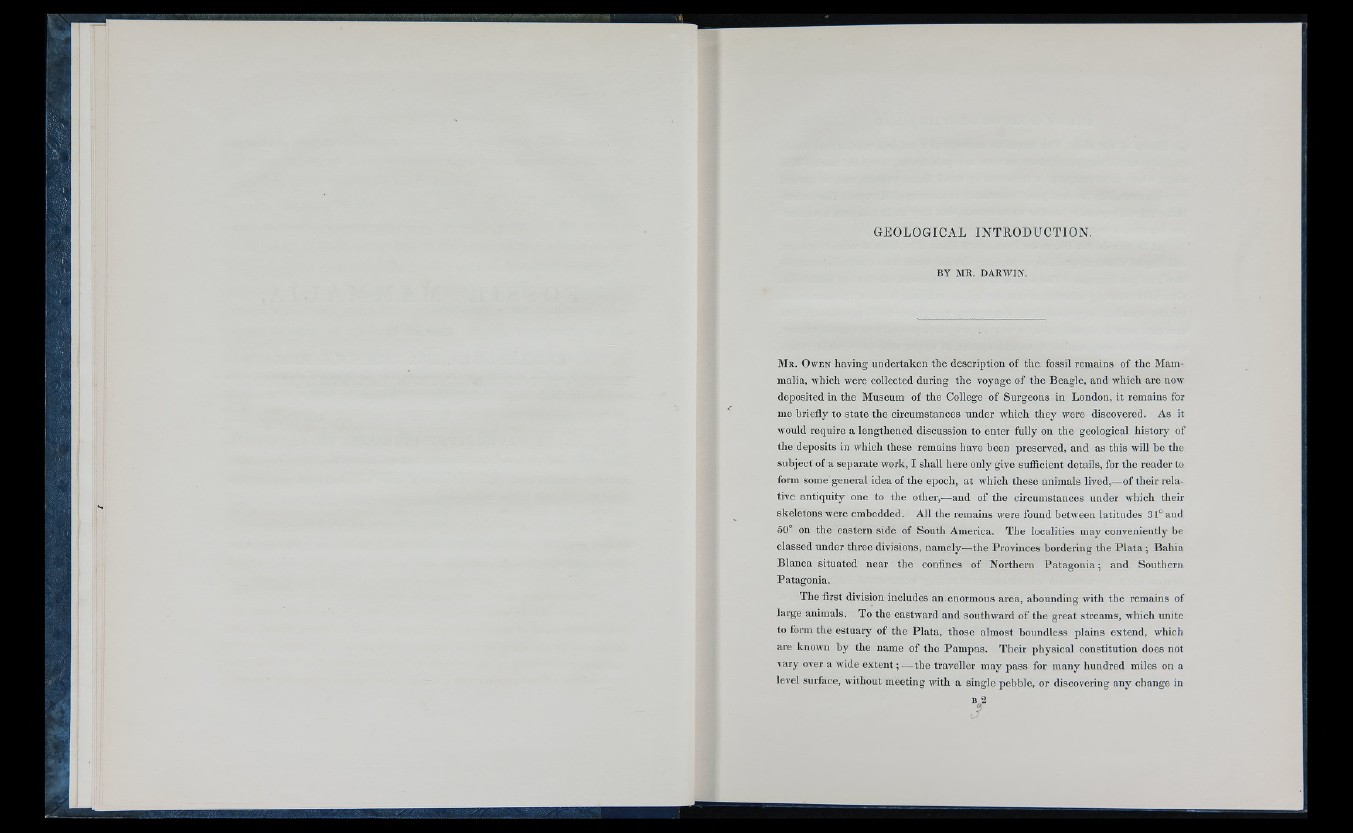
G EO LO G IC A L IN T R O D U C T IO N .
BY M R . D A RW IN .
M r . O w en having undertaken the description of the fossil remains o f the Mammalia,
which were collected during tlie voyage o f the Beagle, and which are now
deposited in the Museum o f the College o f Surgeons in London, it remains for
me briefly to state the circumstances under which they were discovered. A s it
would require a lengthened discussion to enter fully on the geological history of
the deposits in which these remains have been preserved, and as this will be the
subject o f a separate work, I shall here only give sufficient details, for the reader to
form some general idea o f the epoch, at which these animals lived,—o f their relative
antiquity one to the other,—and o f the circumstances under which their
skeletons were embedded. All the remains were found between latitudes 31® and
50° on the eastern side o f South America. The localities may conveniently be
classed under three divisions, namely—the Provinces bordering the P la t a ; Bahia
Blanca situated near the confines o f Northern P a ta g o n ia ; and Southern
Patagonia.
The first division includes an enormous area, abounding with the remains o f
large animals. To the eastward and southward o f the great streams, which unite
to form the estuary o f the Pla ta , those almost boundless plains extend, which
are known b y the name o f the Pampas. Their physical constitution does not
vary over a wide ex ten t; — the traveller may pass for many hundred miles on a
level surface, without meeting with a sing le pebble, or discovering any change in
B 2